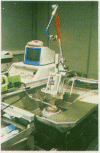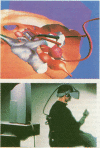Abstract
The rapid development of minimally invasive surgery means that there will be fundamental changes in interventional treatment. Technological advances will allow new minimally invasive procedures to be developed. Application of robotics will allow some procedures to be done automatically, and coupling of slave robotic instruments with virtual reality images will allow surgeons to perform operations by remote control. Miniature motors and instruments designed by microengineering could be introduced into body cavities to perform operations that are currently impossible. New materials will allow changes in instrument construction, such as use of memory metals to make heat activated scissors or forceps. With the reduced trauma associated with minimally invasive surgery, fewer operations will require long hospital stays. Traditional surgical wards will become largely redundant, and hospitals will need to cope with increased through-put of patients. Operating theatres will have to be equipped with complex high technology equipment, and hospital staff will need to be trained to manage it. Conventional nursing care will be carried out more in the community. Many traditional specialties will be merged, and surgical training will need fundamental revision to ensure that surgeons are competent to carry out the new procedures.
Full text
PDF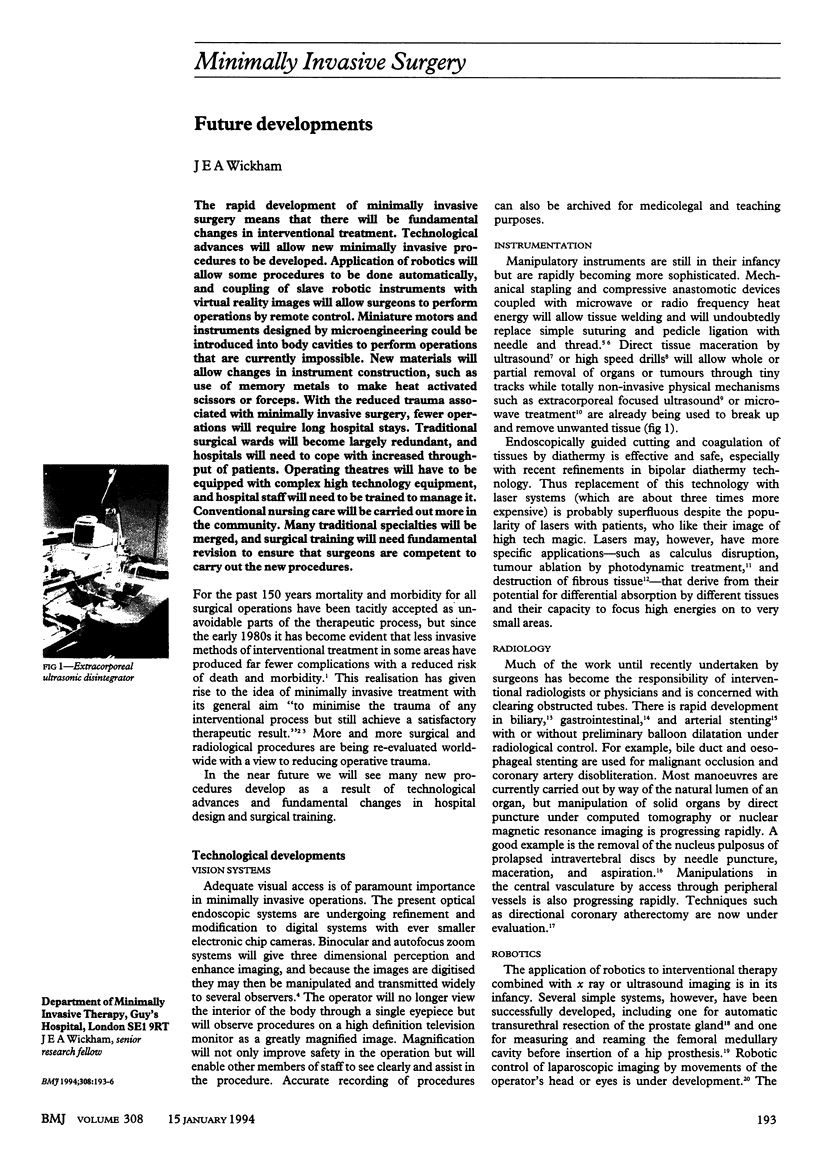
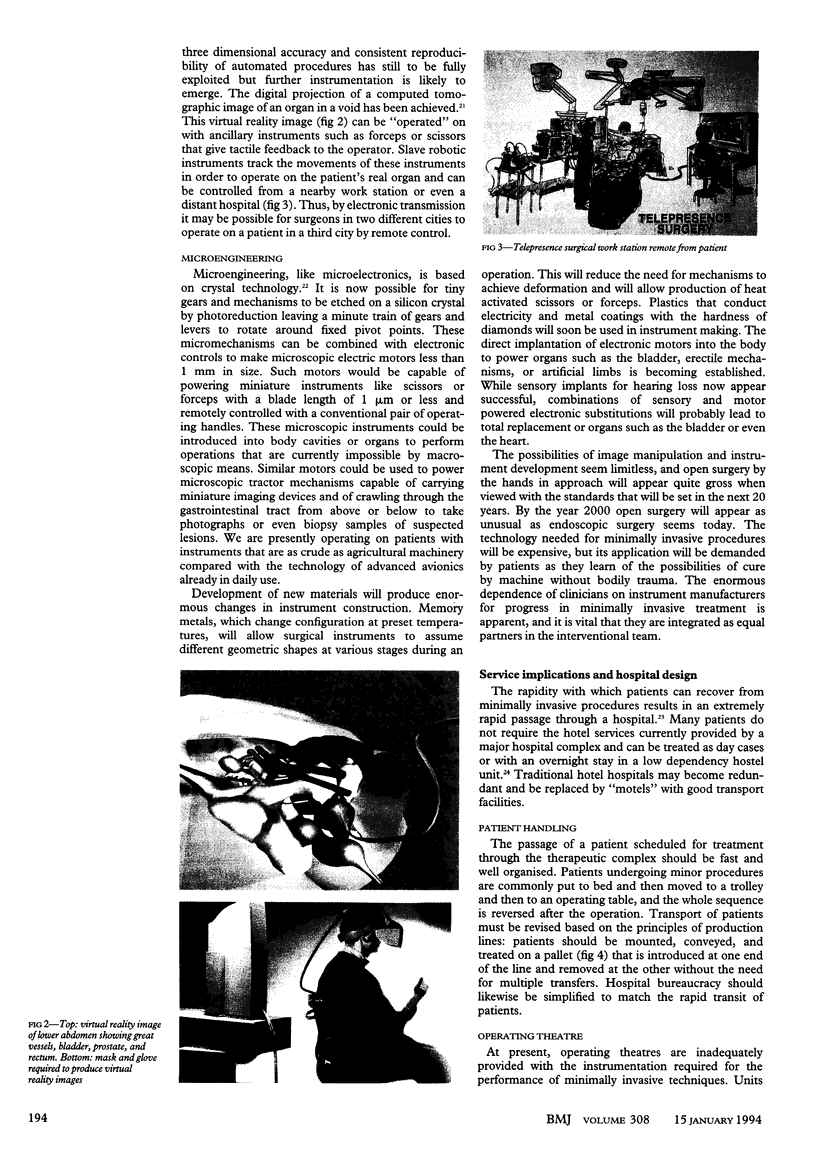
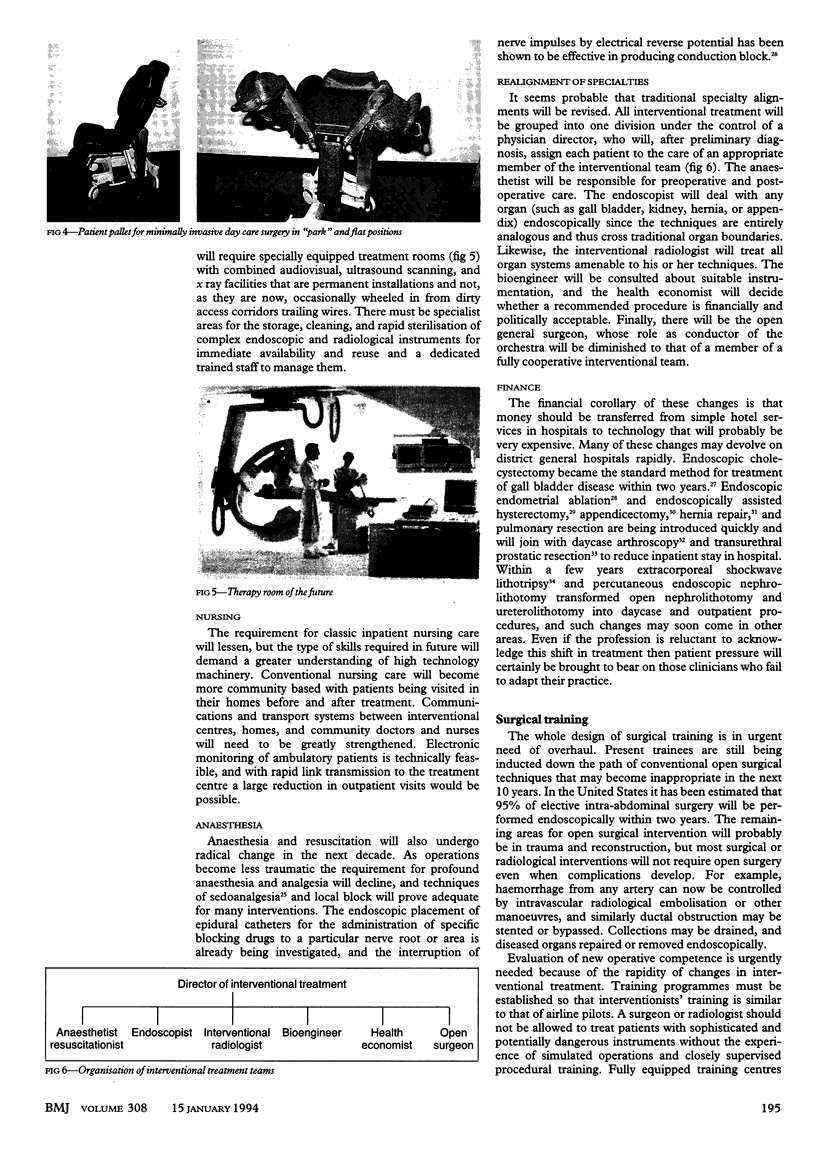
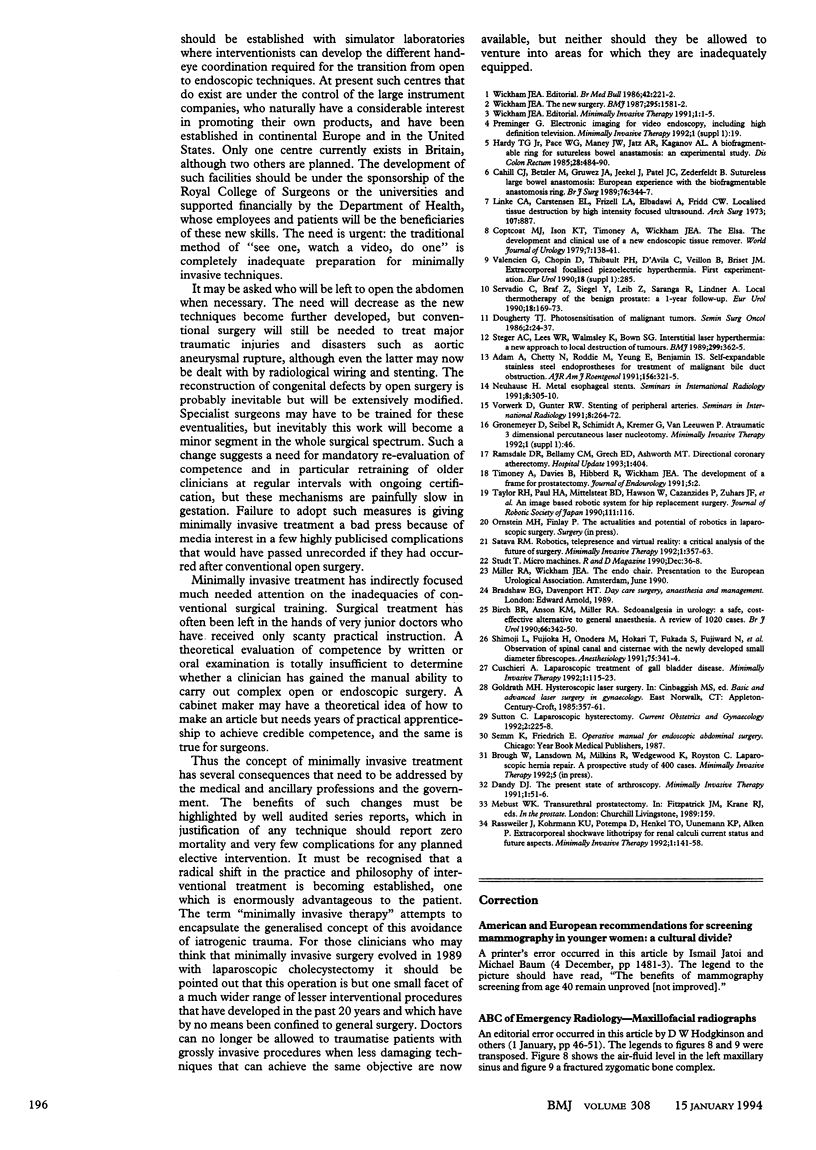
Images in this article
Selected References
These references are in PubMed. This may not be the complete list of references from this article.
- Adam A., Chetty N., Roddie M., Yeung E., Benjamin I. S. Self-expandable stainless steel endoprostheses for treatment of malignant bile duct obstruction. AJR Am J Roentgenol. 1991 Feb;156(2):321–325. doi: 10.2214/ajr.156.2.1702574. [DOI] [PubMed] [Google Scholar]
- Birch B. R., Anson K. M., Miller R. A. Sedoanalgesia in urology: a safe, cost-effective alternative to general anaesthesia. A review of 1020 cases. Br J Urol. 1990 Oct;66(4):342–350. doi: 10.1111/j.1464-410x.1990.tb14952.x. [DOI] [PubMed] [Google Scholar]
- Cahill C. J., Betzler M., Gruwez J. A., Jeekel J., Patel J. C., Zederfeldt B. Sutureless large bowel anastomosis: European experience with the biofragmentable anastomosis ring. Br J Surg. 1989 Apr;76(4):344–347. doi: 10.1002/bjs.1800760409. [DOI] [PubMed] [Google Scholar]
- Dougherty T. J. Photosensitization of malignant tumors. Semin Surg Oncol. 1986;2(1):24–37. doi: 10.1002/ssu.2980020104. [DOI] [PubMed] [Google Scholar]
- Hardy T. G., Jr, Pace W. G., Maney J. W., Katz A. R., Kaganov A. L. A biofragmentable ring for sutureless bowel anastomosis. An experimental study. Dis Colon Rectum. 1985 Jul;28(7):484–490. doi: 10.1007/BF02554090. [DOI] [PubMed] [Google Scholar]
- Linke C. A., Carstensen E. L., Frizzell L. A., Elbadawi A., Fridd C. W. Localized tissue destruction by high-intensity focused ultrasound. Arch Surg. 1973 Dec;107(6):887–891. doi: 10.1001/archsurg.1973.01350240053015. [DOI] [PubMed] [Google Scholar]
- Servadio C., Braf Z., Siegel Y., Leib Z., Saranga R., Lindner A. Local thermotherapy of the benign prostate: a 1-year follow-up. Eur Urol. 1990;18(3):169–173. doi: 10.1159/000463902. [DOI] [PubMed] [Google Scholar]
- Shimoji K., Fujioka H., Onodera M., Hokari T., Fukuda S., Fujiwara N., Hatori T. Observation of spinal canal and cisternae with the newly developed small-diameter, flexible fiberscopes. Anesthesiology. 1991 Aug;75(2):341–344. doi: 10.1097/00000542-199108000-00024. [DOI] [PubMed] [Google Scholar]
- Steger A. C., Lees W. R., Walmsley K., Bown S. G. Interstitial laser hyperthermia: a new approach to local destruction of tumours. BMJ. 1989 Aug 5;299(6695):362–365. doi: 10.1136/bmj.299.6695.362. [DOI] [PMC free article] [PubMed] [Google Scholar]
- Wickham J. E. The new surgery. Br Med J (Clin Res Ed) 1987 Dec 19;295(6613):1581–1582. doi: 10.1136/bmj.295.6613.1581. [DOI] [PMC free article] [PubMed] [Google Scholar]



